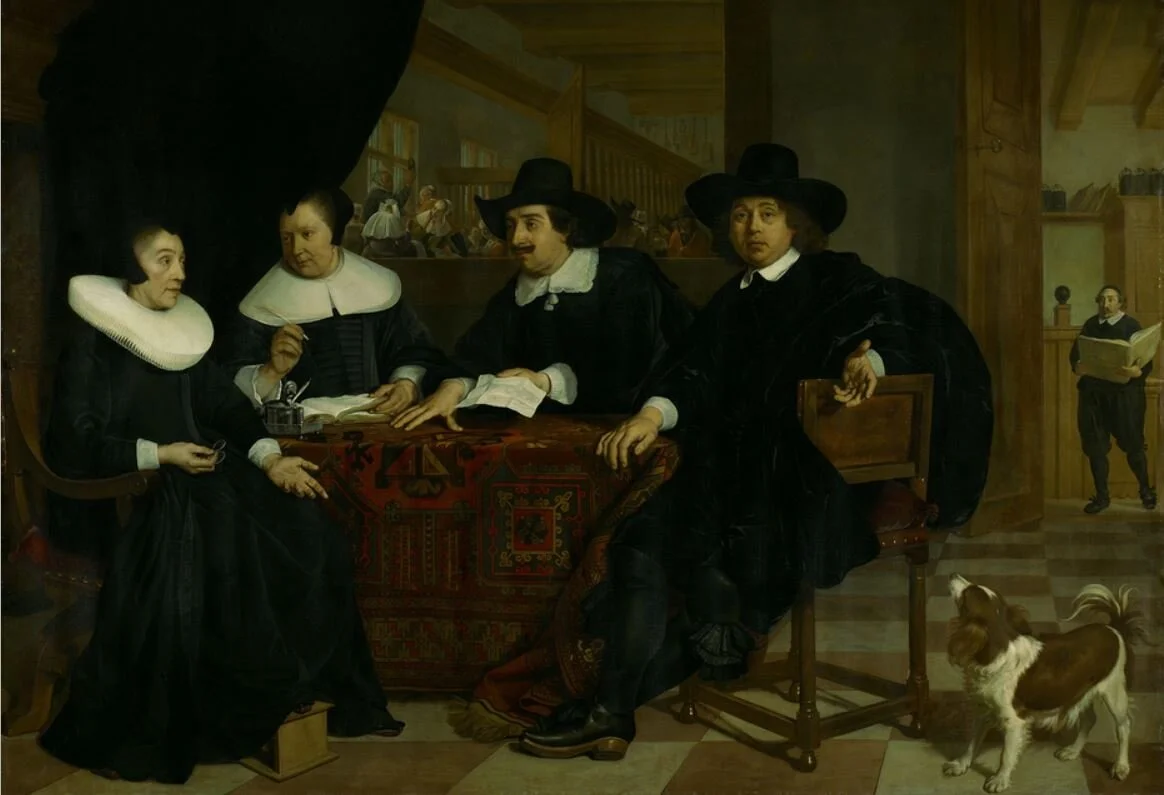Chaos, Order, and Cabinetry
Expressions of an Orderly Utopia by Early Female Architects in the Dutch Golden Age.
By Aaron Tetzlaff / Architectural Designer / New York, NY
‘Dolls’ house of Petronella Oortman’, anonymous, c. 1686 - c. 1710
On the second floor of the Rijksmusuem in Amsterdam stands a curious cabinet. Encased in tortoise shell and containing 9 distinct compartments, presents in dioramic display, unique functions of domestic life in 17th century Holland . This ‘cabinet-house’ is an intricately detailed replica representing not just a new typology of canal houses of their day, but equally a rendering of a society paradoxically torn between great wealth – and an illusory society prided for equality; rendered here, in exquisitely vivid miniature.
Not uncommon for the era, wealthy young brides were often presented these cabinet-houses upon marriage; encouraged to spend lavishly on furnishing, decorating – even giving evening salons to select audiences in an elaborately choreographed display of wealth and status. In this comparatively progressive society, women had rights not commonly afforded their peers in other nation states. As the Dutch Golden Age emerged, the landed aristocracy had receded from public life, keeping largely to their countryside estates, leaving the cities the spheres of the newly minted monopolistic merchant-princes of Dutch trade and finance. Commonly referenced as a ‘tolerant’ society; in which religious freedoms flourished as Europe battled reformation and counter-reformation, the Dutch became the opportunistic inheritors of fleeing foreign fortunes and highly skilled immigrants of all race, creed and religions. During this era, the city would expand rapidly – adding ring after ring of new canals to accommodate this influx, yet civic power, remained solely in the hands of an oligarchic class of ruler-Protestants, dubbed the ‘Regents’; powerfully wealthy families whose marriages, and inheritances consolidated power.
‘Two regents and two regentesses of the Spinhuis’ , by Bartholomeus van der Helst, c. 1650 - 1660
They spent lavishly on public infrastructural projects in the form of canals, gristmills, and roads – much to the happy benefit of their trades, as well it seems, as to the public good. They’ve been credited with the early-modern invention of the ‘Grand Tour’, in which rich young men from prominent families tour the continent, returning laden with curiosities and souvenirs from foreign lands. These collections often requiring cabinets of their own, the ‘Wunderkammer’ as they would come to be known; unique arrangements – early taxonomies of their worlds in miniature.
‘Portrait of a Family in their Kunstkammer’, by Frans Francken (Antwerp), c. 1628 - 1629
While their sons and husbands arranged the world outside – in curiosity cabinets and canals – Dutch women lavished fortunes as the architects of their miniature worlds. The surprising realism of these cabinet-houses were object-lessons in constructing a household, the cultivation of taste, and even designed bedroom arrangements for ideal childbearing . In its way, these cabinets were a deeply interiorized expression of agency, power, and choice – under the guise of seemingly serene domesticity; potentially even an open rebellion to the chastising voices of figures like Jacob Cats’, whose ‘Houwelyck’ was a patronizing domestic instruction manual for women. The cabinet-houses of the 17th century memorialize individually a human spirit stymied by gendered norms yet are equally universal in their creation of highly staged spheres of thinly veiled resistance – exercising freedom of choice in constructing a model in miniature of society itself.
Beyond the safety of the gates of Amsterdam, slightly past the protective Dutch waterline defense, existed a chaotic world of religious intolerance, mass-migration, famine, and pestilence. For the Wunderkammer and the cabinet-house, both expressions of order, these unique constructed realms grasped at a dawning sense of universal human agency; a chorus of imperfect object-instructions modeling an idealized society – which had not yet resolved its externalized paradoxes.
‘Self Portrait’, by Judith Leyster c. 1630
To see a World in a Grain of Sand
And a Heaven in a Wild Flower
Hold Infinity in the palm of your hand
And Eternity in an hour
‘Auguries of Innocence’ – by William Blake
Submission to / Log
Prompt / Model Behavior : From the miniature scenario to the instructional model, from the ideal to the abstract concept given form through modeling, how we see and act in the world is shaped by models
Published / Submission Rejected
#ModelBehavior #Miniature #Kunstkammer #Order #Utopia #FirstFemaleArchitects #Design #Agency
Click the link in the text below to continue on to the next article . . .




